
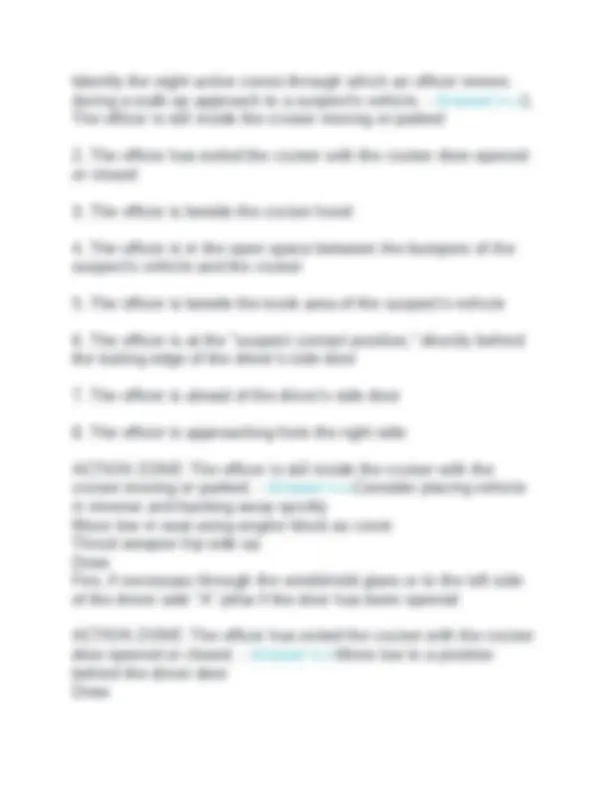
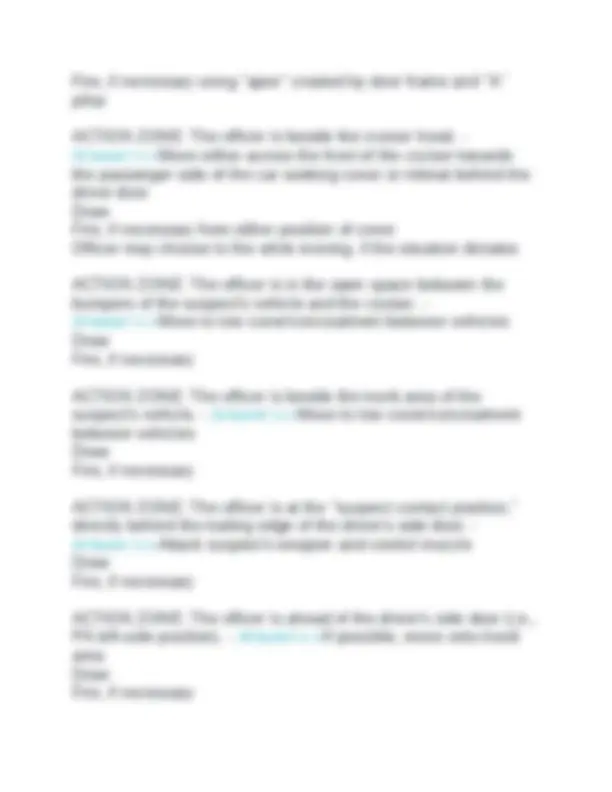
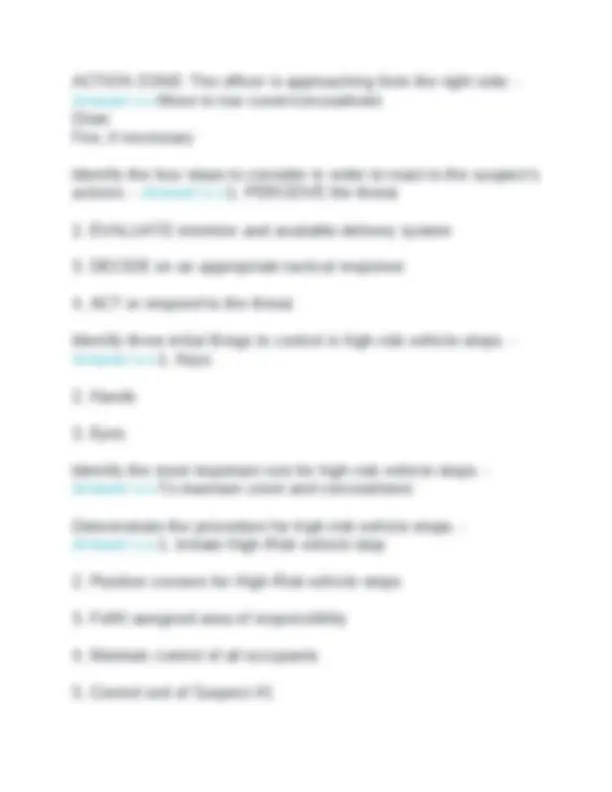
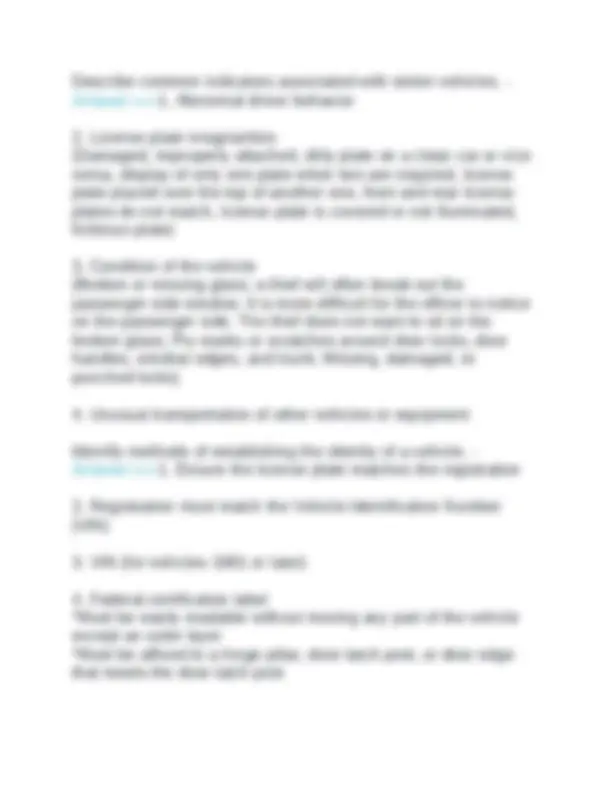
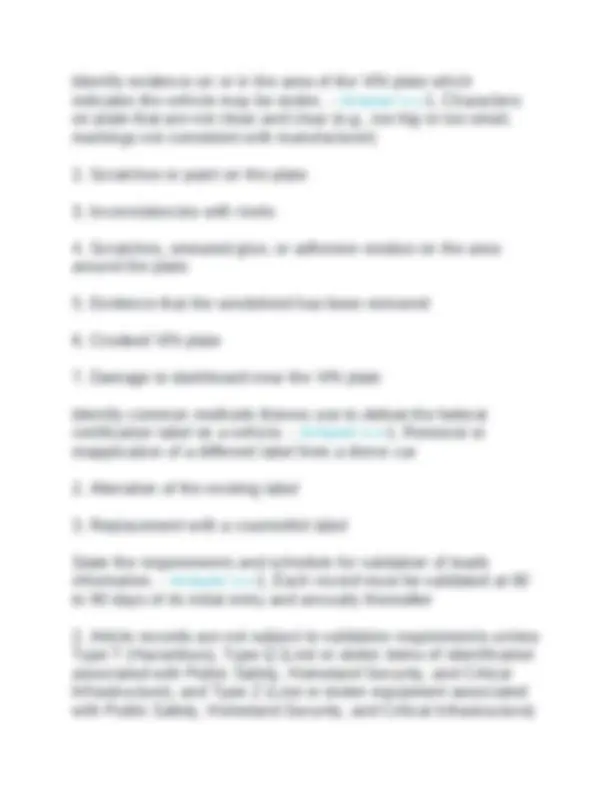
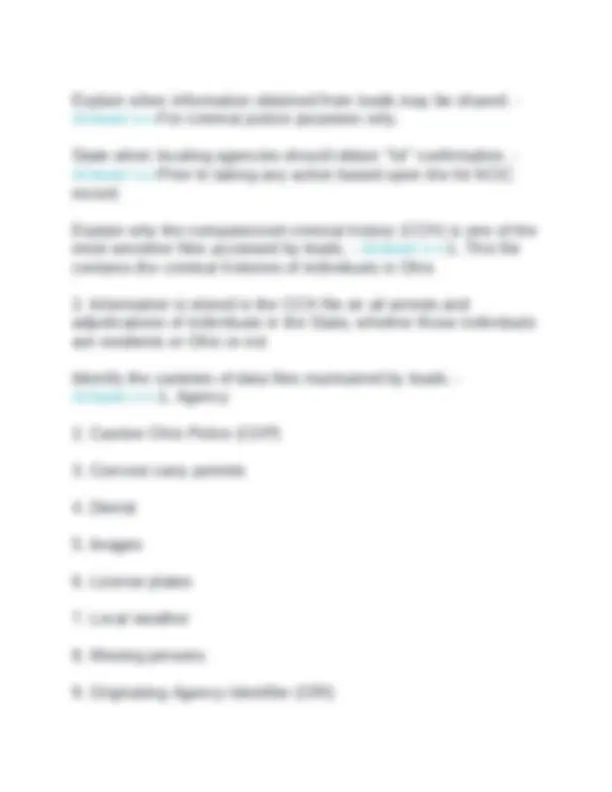


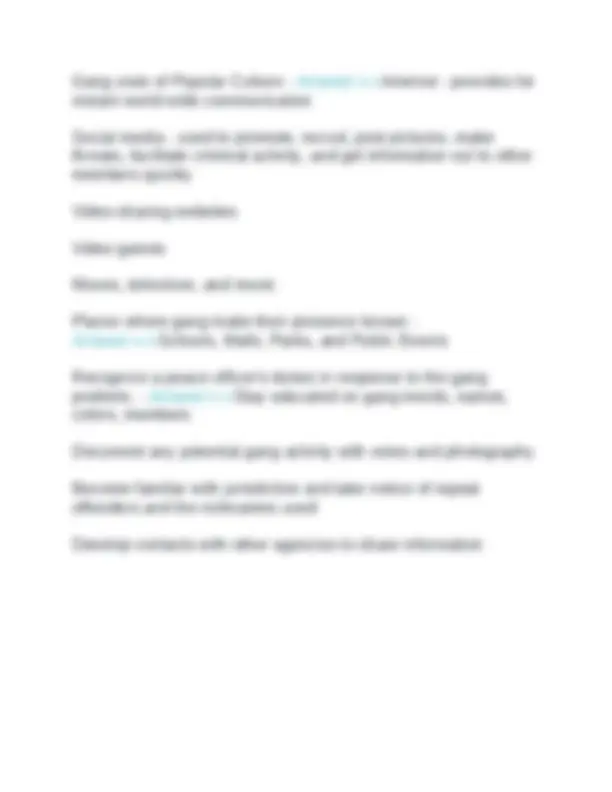


Study with the several resources on Docsity

Earn points by helping other students or get them with a premium plan


Prepare for your exams
Study with the several resources on Docsity

Earn points to download
Earn points by helping other students or get them with a premium plan
Community
Ask the community for help and clear up your study doubts
Discover the best universities in your country according to Docsity users
Free resources
Download our free guides on studying techniques, anxiety management strategies, and thesis advice from Docsity tutors
OPOTA Final 2024 SPOs Unit 8 Review Questions and Answers 100% Pass
Typology: Exams
1 / 15

This page cannot be seen from the preview
Don't miss anything!










Identify the two methods by which an officer may be injured or killed during a vehicle stop. - Answer>>1. Felonious assault
Define the term "elevated-risk vehicle stop." - Answer>>A vehicle stop in which the potential for felonious assault or vehicle crash is elevated. Define the term "high-risk vehicle stop." - Answer>>A vehicle stop where there is a likely potential for felonious assault. Identify the sequential order of the eight verbal tactics an officer should use when making a vehicle stop. - Answer>>1. Greet the violator
Fire, if necessary using "apex" created by door frame and "A" pillar ACTION ZONE: The officer is beside the cruiser hood. - Answer>>Move either across the front of the cruiser towards the passenger side of the car seeking cover or retreat behind the driver door Draw Fire, if necessary from either position of cover Officer may choose to fire while moving, if the situation dictates ACTION ZONE: The officer is in the open space between the bumpers of the suspect's vehicle and the cruiser. - Answer>>Move to low cover/concealment between vehicles Draw Fire, if necessary ACTION ZONE: The officer is beside the trunk area of the suspect's vehicle. - Answer>>Move to low cover/concealment between vehicles Draw Fire, if necessary ACTION ZONE: The officer is at the "suspect contact position," directly behind the trailing edge of the driver's side door. - Answer>>Attack suspect's weapon and control muzzle Draw Fire, if necessary ACTION ZONE: The officer is ahead of the driver's side door (i.e., PA left-side position). - Answer>>If possible, move onto hood area Draw Fire, if necessary
ACTION ZONE: The officer is approaching from the right side. - Answer>>Move to low cover/concealment Draw Fire, if necessary Identify the four steps to consider in order to react to the suspect's actions. - Answer>>1. PERCEIVE the threat
State the main responsibilities when responding to calls for service. - Answer>>- Respond to the incident
Describe common indicators associated with stolen vehicles. - Answer>>1. Abnormal driver behavior
Explain when information obtained from leads may be shared. - Answer>>For criminal justice purposes only. State when locating agencies should obtain "hit" confirmation. - Answer>>Prior to taking any action based upon the hit NCIC record. Explain why the computerized criminal history (CCH) is one of the most sensitive files accessed by leads. - Answer>>1. This file contains the criminal histories of individuals in Ohio
May provide time to evaluate situation Disadvantages of Concealment - Answer>>Does not provide ballistic protection. Identify the degree of offense for unauthorized use of OHLEG. - Answer>>Felony of the Fifth Degree (F-5) Identify how the Ohio Law Enforcement Gateway (OHLEG) is NOT to be utilized. - Answer>>For personal use or gain. Identify how the Ohio Law Enforcement Gateway (OHLEG) is to be utilized. - Answer>>For law enforcement purposes only. Strip search - Answer>>The inspection of a naked individual without scrutinizing the subject's body cavities Basic requirements for body cavity searches - Answer>>You must obtain a search warrant unless there is a medical emergency justifying a search Must be conducted under sanitary conditions in a location that permits only the person being searched and the person(s) conducting the search to observe Must be performed by a medical professional (i.e., physician, registered nurse, licensed practical nurse) of the same sex Major items for which the officer must be alert for during a preliminary health screening. - Answer>>Behavior (e.g., assaultive, suicidal, physical or mental illness); Body deformities and ease of movement; Condition of skin
Causes of illegible fingerprints. - Answer>>Failure to produce the focal points; Allowing the fingers to slip or twist; Failure to clean the fingers and equipment of foreign substances and perspiration; Insufficient ink Identify the indicators of gang membership. - Answer>>Admits membership to a group that meets the criteria of a gang A reliable informant identifies the person as a gang member Resides in or frequents a particular gang's area Adopts its style of dress, symbols, and tattoos Associates with known gang members Has been arrested in the company of identified gang members for offenses consistent with gang activity Has documented criminal history An individual must meet ____ or more of the indicators to be considered a gang member. - Answer>> 2 Graffiti definition - Answer>>a long-term advertisement that marks the gang's power, status, and territory; Found on traffic signs, buildings, alleyways, train cars, overpasses, and billboards Graffiti purposes - Answer>>Sends messages to other members Warns and challenges intruders and rival gang members Tributes to fallen members or gang leaders